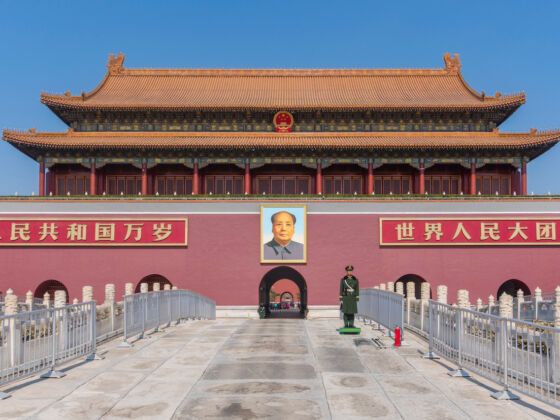I DIDN’T SHOWER when I got up. I parted the shades and threw on the same damn pants I’d been wearing all week.
Our room overlooked a tin-roofed village, and a narrow hutong converted into a row of storage units. The morning sky was orange like a tarp thrown over all this. I thought, today’s the day. Before long, I’d be waiting in line with thousands of other tourists to see the body of Mao Zedong. Last night, Takayo and I were sitting on the bed drinking tea when I told her that we should go.
